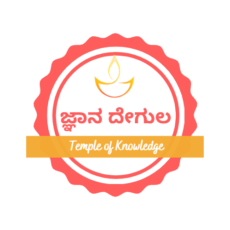The first thing we should learn in order to understand Indian culture is that Indian culture is not just limited to the Indian people alone. It is practiced by the people of all races in India. In some countries it is acceptable to urinate while eating food; this is something that we should avoid in India as well. Collective action and respect for elders are a norm in most Indian societies.
When it comes to respect for elders, this can be understood in the following ways. In some rural areas of the Indian countryside, where there is a notion of ‘no child allowed’ this practice prevails. However, this has not stopped the kids from going to school. In some communities it has become a common norm for women to give birth outside the home and if the child is small, then it is taken care of by the woman’s family; in other cases, the child is taken care of by another family member.
A lot of customs are based on ritual. There are different rituals that determine different events in a community. For example, it is considered proper for newly wedded couples to do their first dance as a group. They do this by breaking a drum, decorating it with flowers and branches, solemnizing the union by kissing each other and passing the drum through the room.
In some regions of the country, people have their own style of dressing. While many Indians wear sari, others wear western clothing like jeans. However, the most common customs and traditions that a person can observe include chivalry, which is regarded as very feminine. In some areas of the country, this is viewed as extremely conservative.
Indian girls usually wear bangles on their hands to ward off evil. This is something that was practiced during the olden days. Nowadays, people consider it a symbol of beauty and love.
The typical Indian wedding is marked by a push or ceremony. In Hindu weddings, there is a ceremony which involves seven procedures or rituals. These procedures are performed to honor the bride, the groom, their parents, their relatives and other external guests who have come to attend the wedding. They are prformed under the guidance of a priest known as Purohit or vadhyar. It is believed that these ceremonies bring success in marriage to both the bride and the groom.
A special paste is used for blessing the newlyweds. It is called ‘Gandha’. In some regions, honey and wine are also used. In some regions, a paste of vermilion and milk is also used. This paste is later mixed with yogurt and decorated with floral essences.
Colors are also used in Indian weddings. Red and gold are the most popular colors. In some regions, blue and green are used. However, white and red remain to be the most preferred colors among Indians. Wedding dresses and headdresses are designed after studying traditional designs and patterns.
The wedding meal is considered incomplete if the groom’s brother and the relatives are is not present. In some areas, this is treated as a customary obligation. A ‘Dhams’ (straw) is fixed and the bride has to eat of it first by keeping her hands over the mouth of the groom and her eyes closed. In some countries, the wedding meal is also considered incomplete if the bride has been engaged for only three days.
In some countries like India, it is believed that the groom should feed the bride before the wedding day. In some other countries like Malaysia, the bride feeds the groom’s brother. In some countries like Singapore, the bride feeds the groom’s brother first before the groom himself feeds the bride. In some states in the US, the groom feeds the bride before the bride feeds the groom.
Weddings in India are celebrated in different ways. In very few places of India, the wedding ceremony is conducted without the involvement of the priest otherwise all ritualistic practices are performed under the guidance o the priest only. Some states in India use the word ‘Basti’ to denote that the wedding has to happen without any priest or ceremony. In some cultures, there is the custom to pronounce the phrase “Om Shanti Om” – which means ‘Let peace prevail upon all’ This phrase is repeated several times during and after the marriage ceremony is over. After this, everyone claps and the wedding celebration are bid goodbye after a traditional lunch.
In the Western cultures, the wedding ceremonies follow simple traditions. In some countries like the US, the wedding is a very simple affair. In some countries like India and Singapore, the wedding traditions and customs depend on their culture and the religion of the couple. There is a specified time period for beginning the marriage, as per Indian traditions called Muhurtham fixed as per the rules of the astrological calculations fixed by the purohit which we may loosely called as priest in English .
